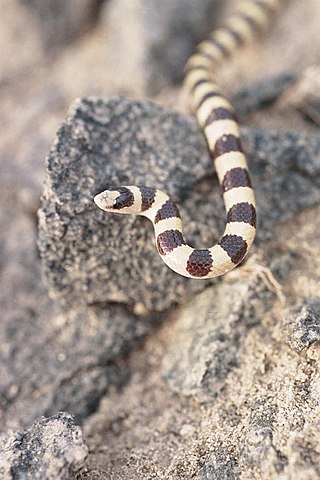
The red-billed blue magpie is a species of bird in the crow family, Corvidae. It is about the same size as the Eurasian magpie, but has a much longer tail, one of the longest of any corvid. It is 65–68 cm (25.5–27 in) long and weighs 196–232 g (6.9–8.2 oz).

The frontalis muscle is a muscle which covers parts of the forehead of the skull. Some sources consider the frontalis muscle to be a distinct muscle. However, Terminologia Anatomica currently classifies it as part of the occipitofrontalis muscle along with the occipitalis muscle.

The occipitalis muscle is a muscle which covers parts of the skull. Some sources consider the occipital muscle to be a distinct muscle. However, Terminologia Anatomica currently classifies it as part of the occipitofrontalis muscle along with the frontalis muscle.

The long-crested eagle is an African bird of prey. Like all eagles, it is in the family Accipitridae. It is currently placed in a monotypic genus Lophaetus. It is characterized by the feathers making up the shaggy crest. It is found throughout mid- to southern-Africa with differing home ranges due to food availability and suitable habitat area but lives mainly on forest edges and near moist areas. Breeding usually occurs year-round depending on food availability with 1 to 2 eggs being laid as is characteristic by raptors. Furthermore, as a raptor species, they commonly eat smaller mammals, however other vertebrates and invertebrates are also consumed.

The nuchal lines are four curved lines on the external surface of the occipital bone:
Bullfrog is a common English language term to refer to large, aggressive frogs, regardless of species.

The squamous part of occipital bone is situated above and behind the foramen magnum, and is curved from above downward and from side to side.

The western crowned warbler is a leaf warbler which breeds in Central Asia. It winters in the forests of the Western Ghats.

The posterior auricular nerve is a nerve of the head. It is a branch of the facial nerve. It communicates with branches from the vagus nerve, the great auricular nerve, and the lesser occipital nerve. Its auricular branch supplies the posterior auricular muscle, the intrinsic muscles of the auricle, and gives sensation to the auricle. Its occipital branch supplies the occipitalis muscle.

The white-headed vulture is an Old World vulture endemic to Africa. Populations have been declining steeply in recent years due to habitat degradation and poisoning of vultures at carcasses. An extinct relative was also present in the Indonesian island of Flores during the Late Pleistocene, indicating that the genus was more widespread in the past.

The western blue-tongued lizard, also known as the western blue-tongued skink, is a large skink native to Australia. It is one of six species of blue-tongued skinks found in Australia, though further species are found in New Guinea and Indonesia.

The yellow-breasted fruit dove locally known as balorinay is a species of bird in the family Columbidae. It is endemic to the Philippines. Its natural habitat is tropical moist lowland forest. While it is listed as least concern in IUCN, it is declining due to habitat loss, hunting and trapping for the illegal wildlife trade.

The Sumatran treepie or Sunda treepie is a species of bird in the family Corvidae. It is endemic to the island of Sumatra in Indonesia. Its natural habitats are subtropical or tropical moist lowland forest and subtropical or tropical moist montane forest. The Bornean treepie is sometimes considered to be a subspecies of this bird.

The rufous-vented yuhina is a bird species in the white-eye family Zosteropidae. It is found along the northern parts of the Indian subcontinent, primarily in the Eastern Himalayas, and ranges across Bhutan, India, Tibet, Myanmar, and Nepal. Its natural habitat is subtropical or tropical moist montane forests.

The silvery grebe is a species of grebe in the family Podicipedidae. It is found in the western and southern part of South America at altitudes of up to 4,000 metres (13,000 ft). Its natural habitat is freshwater lakes but it also feeds in saline lakes.

The occipital branch of posterior auricular artery passes backward, over the Sternocleidomastoideus, to the scalp above and behind the ear. It supplies the Occipitalis and the scalp in this situation and anastomoses with the occipital artery.

Microlophus occipitalis, colloquially known as the knobbed Pacific iguana, is a lizard included within the Tropiduridae family. It is a member of the Microlophus genus and thus also considered a lava lizard. The knobbed Pacific iguana is found primarily in Western Peru and Ecuador, lining the coasts. The habitats of the knobbed Pacific iguana can be considered to be both broad and diverse as they are typically found in many different places such as beaches, lomas, and all the way to desert regions. This diversity is furthered as these lizards can also be found in open areas, between rocks, or bushes.

The Western shovelnose snake is a species of snake of the family Colubridae.

The occipital gyri (OcG) are three gyri in parallel, along the lateral portion of the occipital lobe, also referred to as a composite structure in the brain. The gyri are the superior occipital gyrus, the middle occipital gyrus, and the inferior occipital gyrus, and these are also known as the occipital face area. The superior and inferior occipital sulci separates the three occipital gyri.
Adelphostigma is a genus of snakes of the family Colubridae.


















